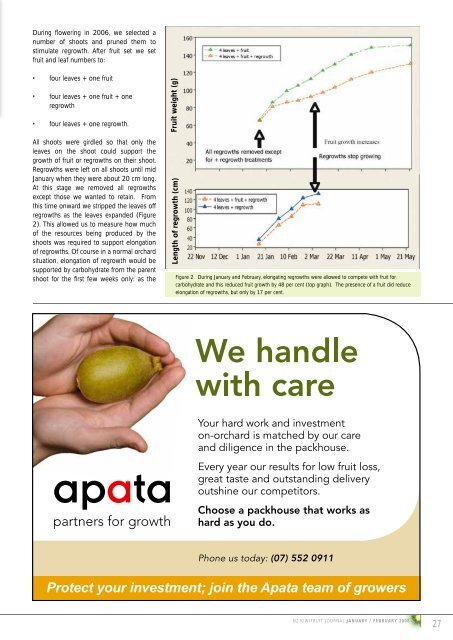Thirsty vines Summer girdling Compost teas Organic marketing The ...
Thirsty vines Summer girdling Compost teas Organic marketing The ...
Thirsty vines Summer girdling Compost teas Organic marketing The ...
Create successful ePaper yourself
Turn your PDF publications into a flip-book with our unique Google optimized e-Paper software.
During fl owering in 2006, we selected a<br />
number of shoots and pruned them to<br />
stimulate regrowth. After fruit set we set<br />
fruit and leaf numbers to:<br />
• four leaves + one fruit<br />
• four leaves + one fruit + one<br />
regrowth<br />
• four leaves + one regrowth.<br />
All shoots were girdled so that only the<br />
leaves on the shoot could support the<br />
growth of fruit or regrowths on their shoot.<br />
Regrowths were left on all shoots until mid<br />
January when they were about 20 cm long.<br />
At this stage we removed all regrowths<br />
except those we wanted to retain. From<br />
this time onward we stripped the leaves off<br />
regrowths as the leaves expanded (Figure<br />
2). This allowed us to measure how much<br />
of the resources being produced by the<br />
shoots was required to support elongation<br />
of regrowths. Of course in a normal orchard<br />
situation, elongation of regrowth would be<br />
supported by carbohydrate from the parent<br />
shoot for the fi rst few weeks only: as the<br />
Fruit weight (g)<br />
Length of regrowth (cm)<br />
Figure 2. During January and February, elongating regrowths were allowed to compete with fruit for<br />
carbohydrate and this reduced fruit growth by 48 per cent (top graph). <strong>The</strong> presence of a fruit did reduce<br />
elongation of regrowths, but only by 17 per cent.<br />
NZ KIWIFRUIT JOURNAL JANUARY / FEBRUARY 2008<br />
27


